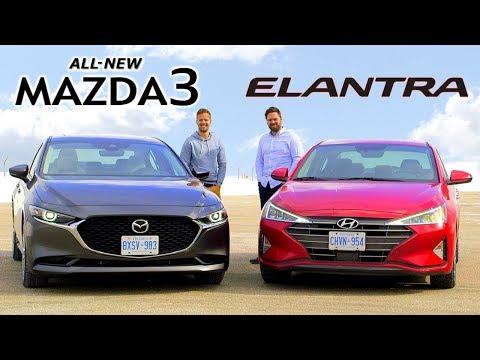When I decided it was time to upgrade my daily driver, I knew the process wouldn’t be simple. I had my eye on two compelling contenders: the 2019 Mazda3 and the Hyundai Elantra. Both cars were vying for a place in my garage, each boasting its own unique set of features and charms. I set out on a mission to test drive both and see which one would best fit my lifestyle.
The Mazda3 was first on my list. From the moment I laid eyes on it, I was captivated by its sleek, modern design. The body lines were sharp and precise, giving it a dynamic, almost aggressive look. When I slid into the driver’s seat, I felt immediately at home. The interior was elegant and refined, with high-quality materials and a driver-focused layout. The infotainment system, though not the most advanced, was intuitive enough, and the minimalistic approach to controls was refreshing.
Driving the Mazda3 was a revelation. The handling was incredibly precise, and the car felt connected to the road in a way that was both exhilarating and reassuring. The 2.5-liter engine provided a robust power delivery, making acceleration smooth and effortless. Whether navigating through city traffic or cruising on the highway, the Mazda3 felt agile and responsive. The ride was firm, yet comfortable, and the cabin was well-insulated from road noise, creating a serene driving environment.
After spending some quality time with the Mazda3, I turned my attention to the Hyundai Elantra. The Elantra presented itself with a more conservative design compared to the Mazda3, but it had its own appeal. The exterior was sleek, but with more traditional lines and a less aggressive stance. The interior was spacious and practical, featuring a straightforward layout that was easy to understand at a glance. The materials were decent for the price, and the infotainment system was a bit more modern than the Mazda3’s, with a larger touchscreen and more connectivity options.
Driving the Elantra was a different experience altogether. The ride was softer, and while it might not have had the same level of sharpness as the Mazda3, it was still quite competent. The 2.0-liter engine offered adequate power for daily driving, though it lacked the spirited feel of the Mazda3’s engine. What stood out was the Elantra’s comfort; it was a bit more relaxed and less engaging, but it made up for that with a smooth and composed ride. The cabin was quieter, with less road noise seeping through, making for a more laid-back driving experience.
Comparing the two, I found each had its strengths and weaknesses. The Mazda3 excelled in driving dynamics and offered a more premium feel, which made it feel like a more engaging choice. Its precise handling and robust engine were fantastic for someone who enjoyed a more spirited drive. On the other hand, the Elantra provided a greater sense of comfort and practicality. It was a bit less thrilling to drive, but it made up for that with its smooth ride and spacious interior.
Ultimately, the choice came down to what mattered most for my daily needs. If I valued driving excitement and a premium feel, the Mazda3 was the clear winner. Its dynamic handling and upscale interior made it a joy to drive, even on the most mundane commutes. However, if comfort, practicality, and a more relaxed driving experience were my priorities, the Elantra would have been the better option. Its spacious interior and smoother ride made it an excellent choice for someone who spends a lot of time on the road but doesn’t need the sporty edge of the Mazda3.
In the end, I went with the Mazda3. The driving experience it offered was unmatched, and I felt it aligned better with my personal preferences. Every drive in the Mazda3 felt like a small adventure, and its design and handling made it stand out in the crowded compact car market. The Elantra was a solid contender and would have been a great choice for someone with different priorities, but for me, the Mazda3’s combination of style, performance, and driving pleasure made it the clear winner in this daily drivers duel.
